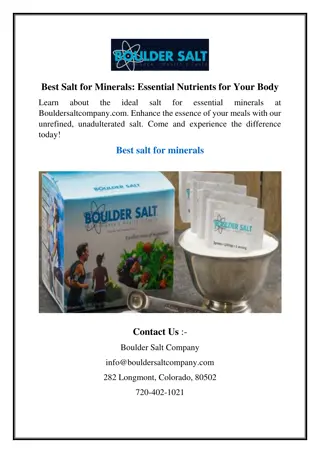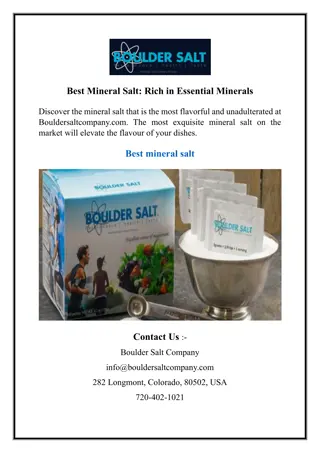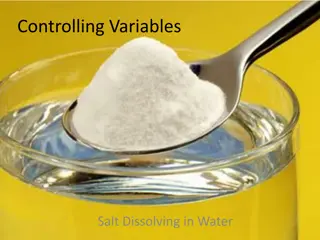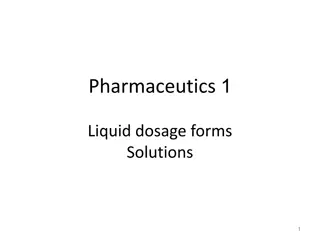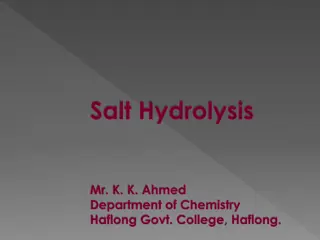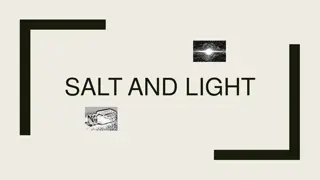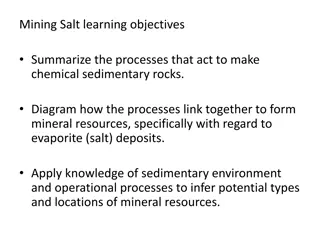Quantitative Determination of Water in Aqueous Salt
Practical II in Inorganic Chemistry involves Experiment No. 3 - Quantitative Determination of Water in a salt. The experiment requires using KAl(SO4)2.12H2O, a crucible, and a Bunsen burner. The procedure includes weighing the sample, heating the crucible, and calculating the water content. Questions address the importance of heating the crucible, factors affecting water content in hydrous Alum, properties of anhydrous Alum, and examples of hydrous salts.
Download Presentation

Please find below an Image/Link to download the presentation.
The content on the website is provided AS IS for your information and personal use only. It may not be sold, licensed, or shared on other websites without obtaining consent from the author.If you encounter any issues during the download, it is possible that the publisher has removed the file from their server.
You are allowed to download the files provided on this website for personal or commercial use, subject to the condition that they are used lawfully. All files are the property of their respective owners.
The content on the website is provided AS IS for your information and personal use only. It may not be sold, licensed, or shared on other websites without obtaining consent from the author.
E N D
Presentation Transcript
Inorganic Chemistry Practical II The First Course By Lecturer Sinan Midhat Al-Bayati Asst. Prof. Anaam Majeed Rasheed Asst. Lecturer Al-Ameen Bariz Omar Supervised by: Dr. Rehab AbdulMahdi Al-Hassan
Experiment No. (3) Quantitative Determination of Water in aqueous salt: Reagents Required: KAl(SO4)2.12H2O Crucible Crucible tongs Bunsen burner
Procedure: Weight your Alum sample before starting this section. Weight the clean and dry crucible and record this mass in your notebook. Put the weight of your Alum in crucible and then heat it by Bunsen burner on the porcelain triangle supported by a ring and ring stand for few minutes until Alum properties change . Cool the crucible to room temperature and then weight your crucible with anhydrous Alum, record the second mass in your notebook.
Calculations: ?1= ???? ?? ???? ?2= ???? ?? ?? ?????? ???? ?2 ?1= ?3? ? ???? ?? ????? %?2? =?3 100 ?1 ?2 ????? ????????? ?????????? ???? ?? ???? = ?.?? ?? ?? ?????? ???? ?1 ?.?? ?? ?? ?????? ???? + 18? ? = ????? ????????? =
Questions: Why we heated the crucible before using it? What are the factors on which the number of water in hydrous Alum relays on? What is the anhydrous Alum basic? Give examples of hydrous salt?





